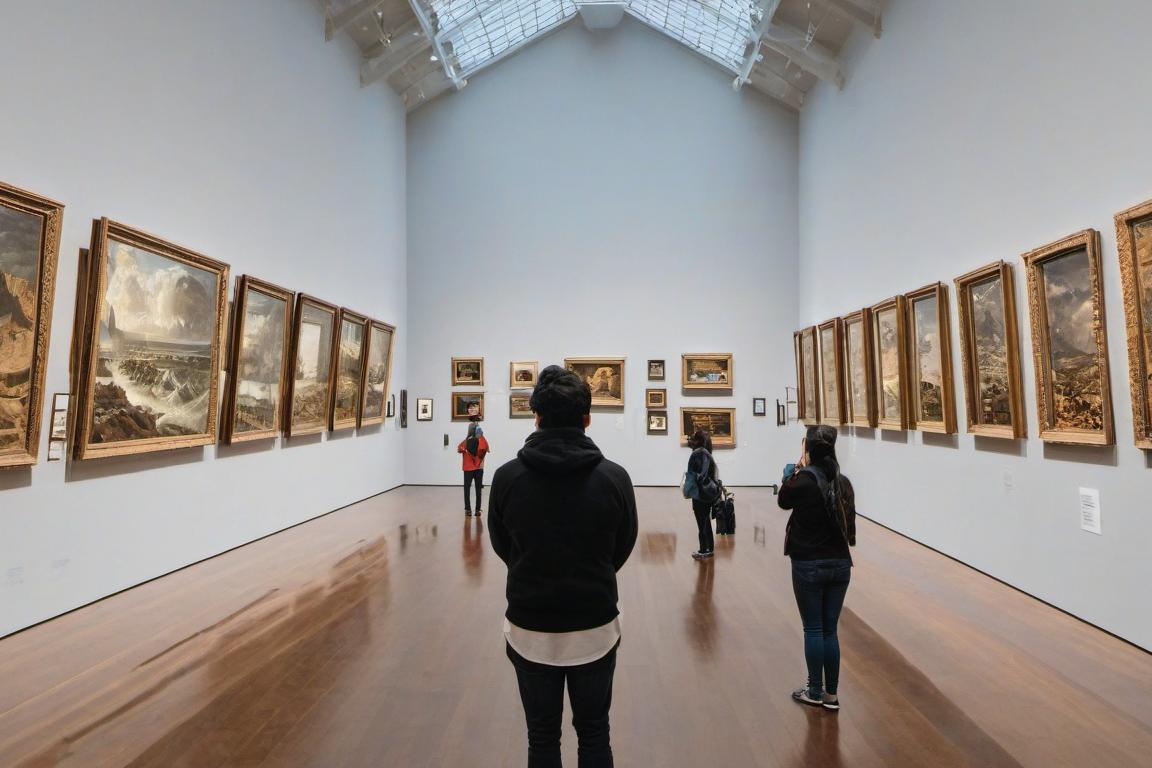
What to Wear to a Museum
A Guide to Enjoying Museums: What to Wear, Do, and Avoid
Museums are sanctuaries of culture, history, and art. Whether you’re exploring a natural history museum, a contemporary art gallery, or a historical landmark, your visit can be an enriching experience. However, what you wear, how you behave, and the approach you take can greatly affect your enjoyment and the experience of others. Here’s a comprehensive guide to help you prepare for a museum visit.
What to Wear to a Museum
1. Prioritize Comfort
Museums often involve a lot of walking, standing, and sometimes even stairs. Here are some tips:
- Comfortable Shoes: Sneakers, flats, or low-heeled boots are ideal. Avoid high heels or new shoes that might cause blisters.
- Weather-Appropriate Layers: Museums are usually temperature-controlled, but it’s a good idea to wear layers, such as a light jacket or cardigan, especially if transitioning from outdoor heat or cold.
- Breathable Fabrics: Cotton or linen clothing can keep you comfortable during a long day.
2. Consider Practicality
- Avoid Oversized Bags: Many museums have bag restrictions, and larger bags may need to be checked in. Opt for a crossbody bag or small backpack for essentials.
- Minimal Jewelry: If you’re leaning over exhibits or navigating crowds, bulky jewelry can be cumbersome.
- Closed-Toe Shoes for Special Tours: Some museum tours, especially behind-the-scenes ones, may require closed-toe footwear.
3. Keep it Respectful
- Avoid Distracting Outfits: Museums are shared spaces, and flashy or noisy outfits (e.g., lots of jingling accessories) can be distracting.
- Cultural Sensitivity: If visiting museums tied to specific cultures or religions, consider modest attire out of respect.
What to Do in a Museum
1. Plan Ahead
- Research the Museum: Check the museum’s website for opening hours, ticket requirements, and current exhibits.
- Book Tickets in Advance: Many museums have timed entries to prevent overcrowding. Booking online ensures you won’t face disappointment.
- Read Rules and Policies: Familiarize yourself with the museum’s policies on photography, bag sizes, and prohibited items.
2. Be Time-Conscious
- Start Early: Mornings are generally less crowded, offering a quieter experience.
- Allocate Enough Time: Larger museums can take several hours to explore fully. Plan your visit so you’re not rushed.
3. Engage with the Exhibits
- Take a Guided Tour: Many museums offer tours that provide deeper insights into exhibits.
- Use Audio Guides: If available, these guides can enrich your understanding of the pieces.
- Read Exhibit Descriptions: Spend time understanding the context of what you’re viewing.
4. Be Considerate to Others
- Keep Your Voice Low: Museums are spaces for quiet reflection. Speak softly if necessary.
- Follow Queue Etiquette: Wait your turn to view popular exhibits.
- Stay Aware of Your Surroundings: Avoid blocking pathways or exhibits while taking photos or lingering.
5. Make the Most of Your Visit
- Ask Questions: Museum staff and guides are often eager to share their knowledge.
- Visit Temporary Exhibits: These often showcase unique and rare pieces not part of the regular collection.
- Take Breaks: Many museums have cafes or benches. Pause to rest and reflect if needed.
What Not to Do in a Museum
1. Avoid Being Disruptive
- No Loud Conversations: Boisterous chatter can disturb others.
- Avoid Running or Roughhousing: Museums aren’t playgrounds, even for children.
- Don’t Touch the Artifacts: Oils and dirt from hands can damage delicate items. Respect “Do Not Touch” signs.
2. Photography Dos and Don’ts
- No Flash Photography: Bright lights can harm sensitive artwork.
- Check Photography Policies: Some museums restrict photography entirely, especially for temporary exhibits.
- Don’t Hog Photo Spots: Be quick and considerate when capturing popular displays.
3. Don’t Ignore Personal Comfort
- Stay Hydrated: Bring a water bottle if allowed or take advantage of drinking fountains.
- Eat Only in Designated Areas: Food and drinks are usually prohibited near exhibits to prevent spills and stains.
4. Don’t Be Unprepared
- Avoid Going Without a Plan: Wandering aimlessly might make you miss key highlights.
- Don’t Overpack: Carrying heavy bags can be exhausting and might not even be permitted inside.
Tips for Different Types of Museums
1. Art Museums
- Focus on a Few Pieces: It’s easy to feel overwhelmed in large galleries. Choose a few works to study in-depth.
- Respect Barriers: Stand behind any ropes or markers to protect the art.
- Take Notes: Jot down artists’ names or inspiring details for further exploration later.
2. Natural History Museums
- Engage with Interactive Displays: These museums often have hands-on sections designed for learning.
- Follow Child-Friendly Routes: If visiting with kids, look for family-oriented paths or exhibits.
3. Science and Technology Museums
- Participate Actively: These museums often include experiments or VR experiences. Don’t hesitate to dive in.
- Ask Questions: Staff can often explain scientific principles in simpler terms.
4. Historical Museums
- Contextualize the Artifacts: Read about the era or events represented by the exhibits for deeper appreciation.
- Be Mindful of Sensitive Topics: Many history museums cover complex or tragic events. Approach with respect.
Tips for Visiting Museums with Children
- Choose Kid-Friendly Museums: Many have special children’s exhibits or activity zones.
- Set Expectations: Explain museum etiquette, like no running or touching, before arrival.
- Take Breaks: Let kids rest periodically to avoid fatigue.
- Encourage Interaction: Many museums offer scavenger hunts or kid-focused guides.
- Bring Snacks: Check for designated eating areas to refuel.
Special Considerations
Accessibility
- Check for Wheelchair Access: Most museums provide ramps, elevators, and wheelchairs.
- Use Assistive Devices: Many institutions offer audio descriptions, braille guides, or sign language interpreters.
- Contact Ahead: If you have specific needs, reaching out to the museum in advance can ensure accommodations.
International Museums
- Understand Cultural Norms: Behavior that’s acceptable in one country might be frowned upon in another.
- Language Barriers: Use translation apps or guides to bridge communication gaps.
- Currency: Check if the museum accepts foreign cards or requires local cash for entry fees.
Post-Visit Tips
1. Reflect and Document
- Write Down Your Thoughts: Capture your impressions of exhibits to deepen your appreciation.
- Share Your Experience: Discuss highlights with friends or on social media, respecting photography rules.
2. Explore Further
- Research More: Dive deeper into topics or artists you found fascinating.
- Plan Future Visits: If you didn’t see everything, consider returning or exploring related museums.
3. Store Mementos Thoughtfully
- Keep Tickets and Brochures: These make great souvenirs and reminders of your visit.
- Frame Photos or Art Prints: Showcase memorable pieces from the gift shop in your home.
Visiting a museum can be a transformative experience, offering insights into worlds you may not have encountered before. By dressing appropriately, respecting the space, and approaching your visit with curiosity and consideration, you’ll ensure a fulfilling and memorable outing for yourself and others. Happy exploring!




